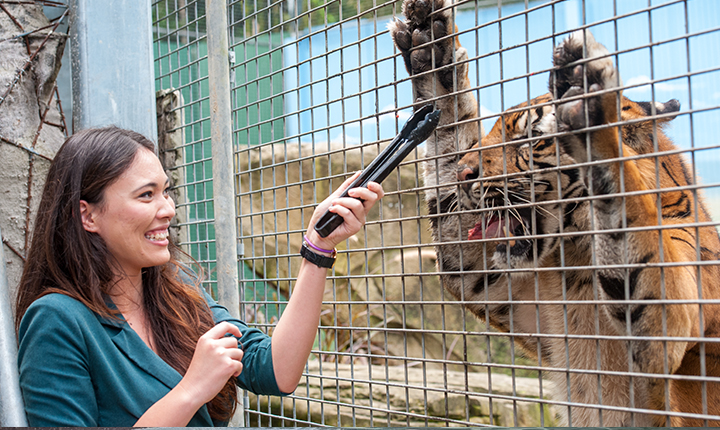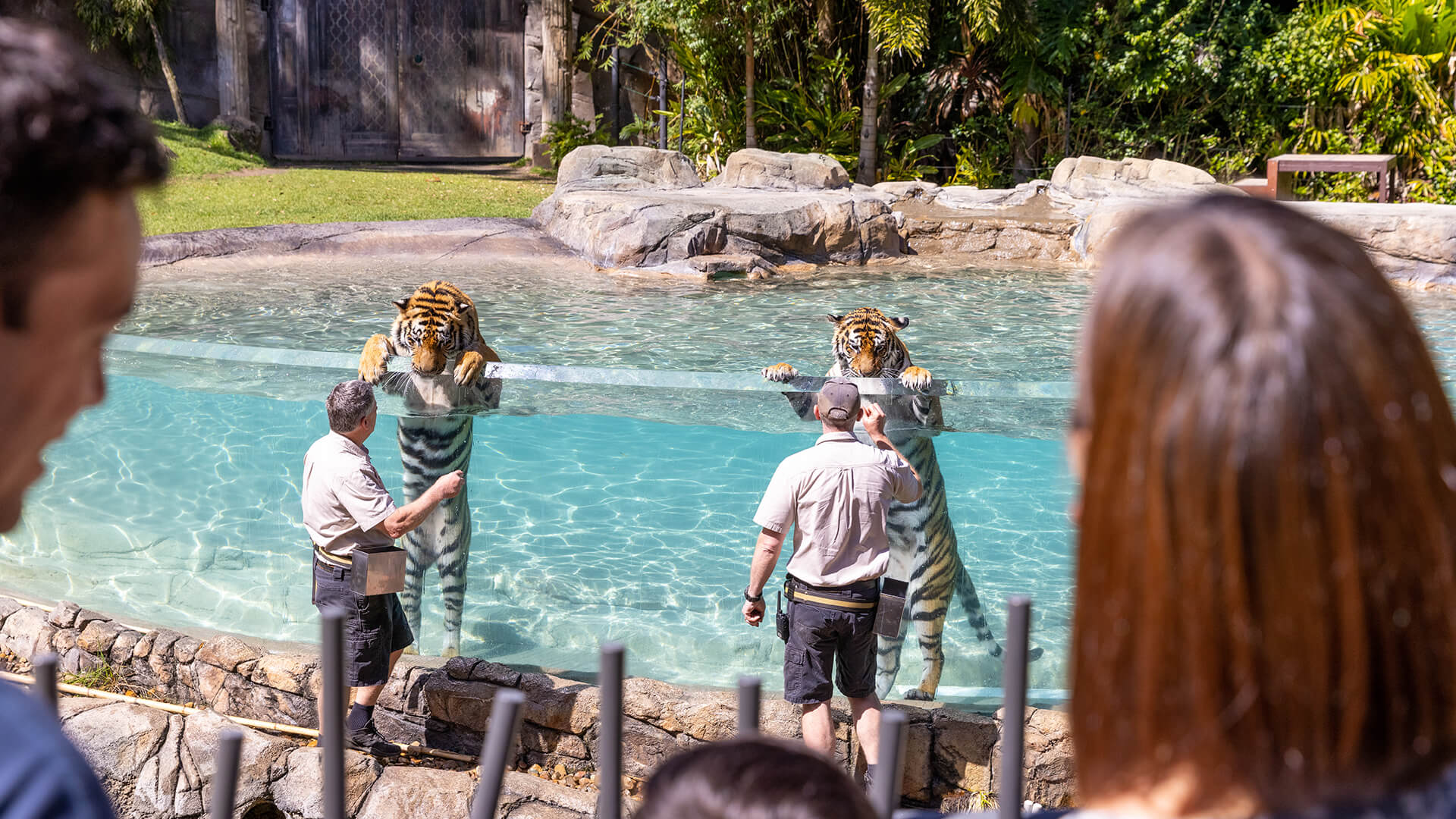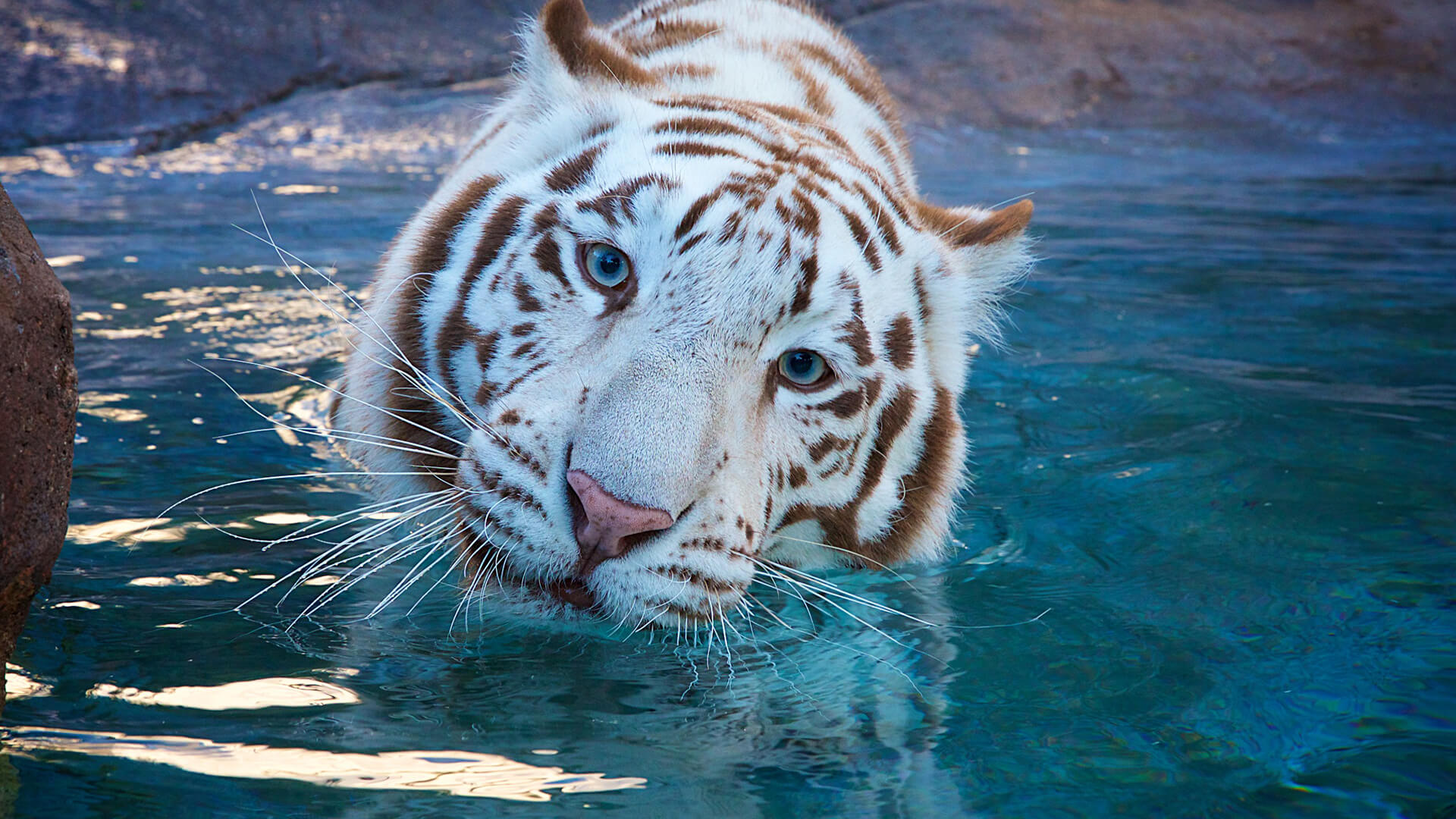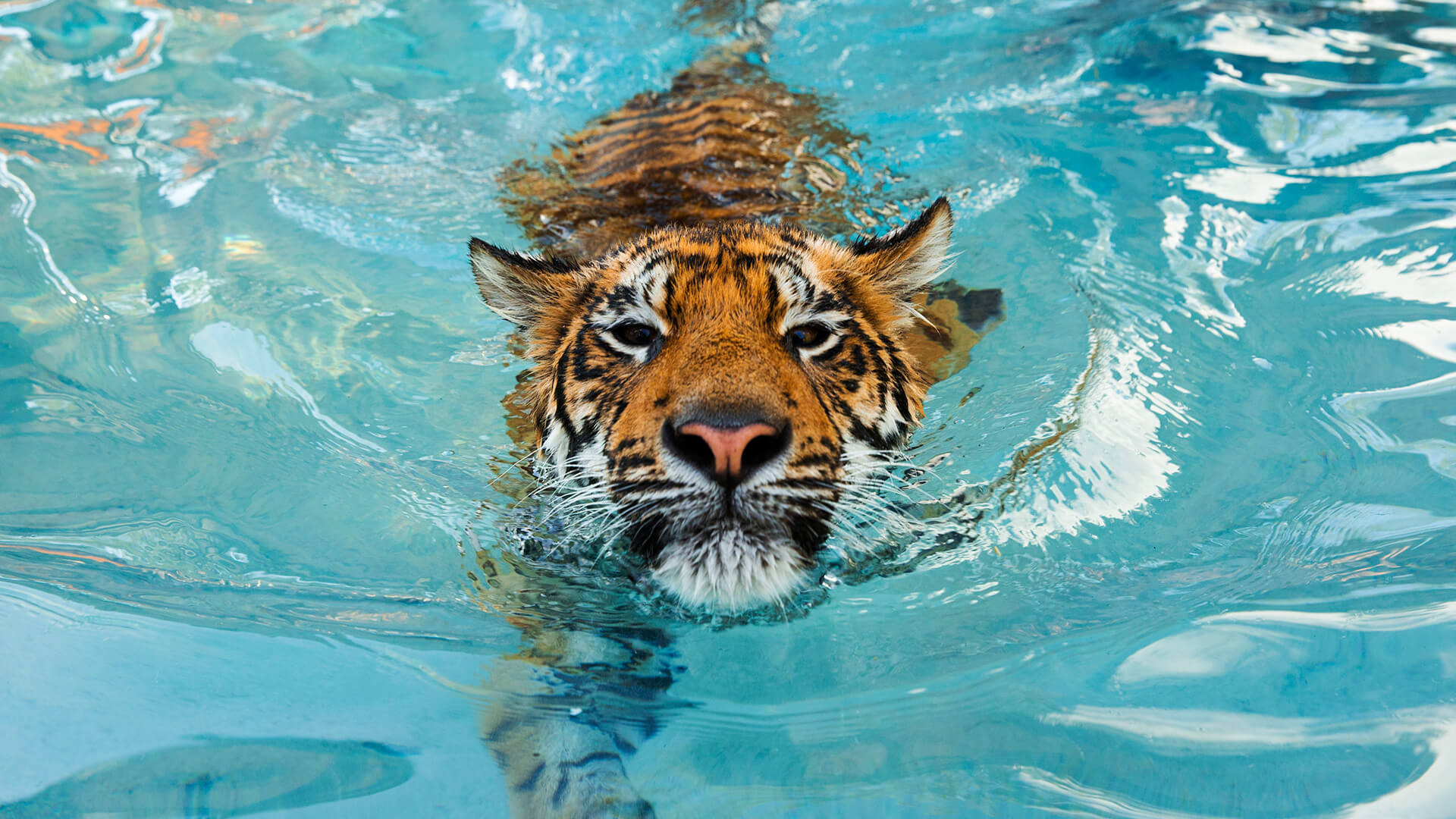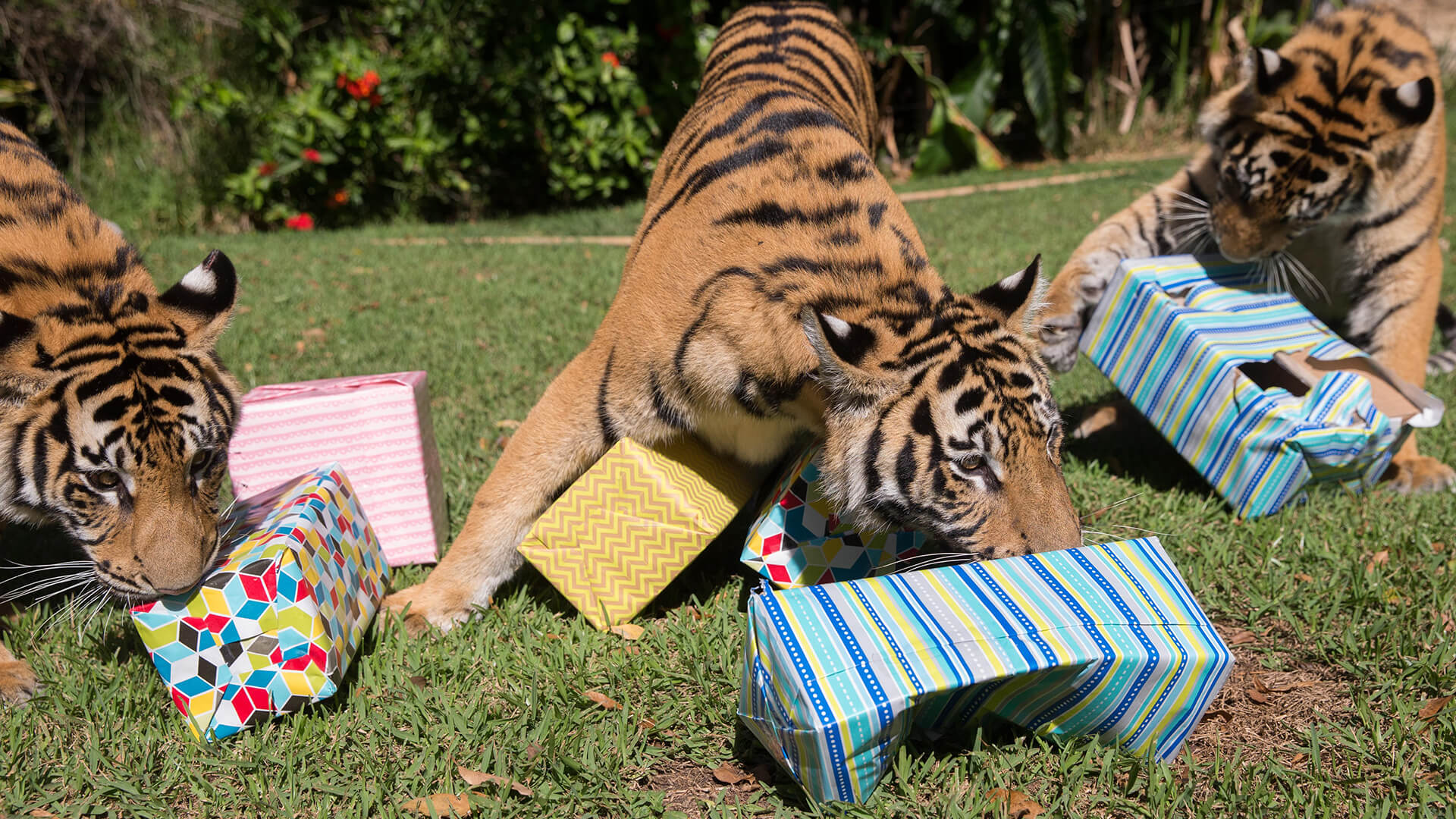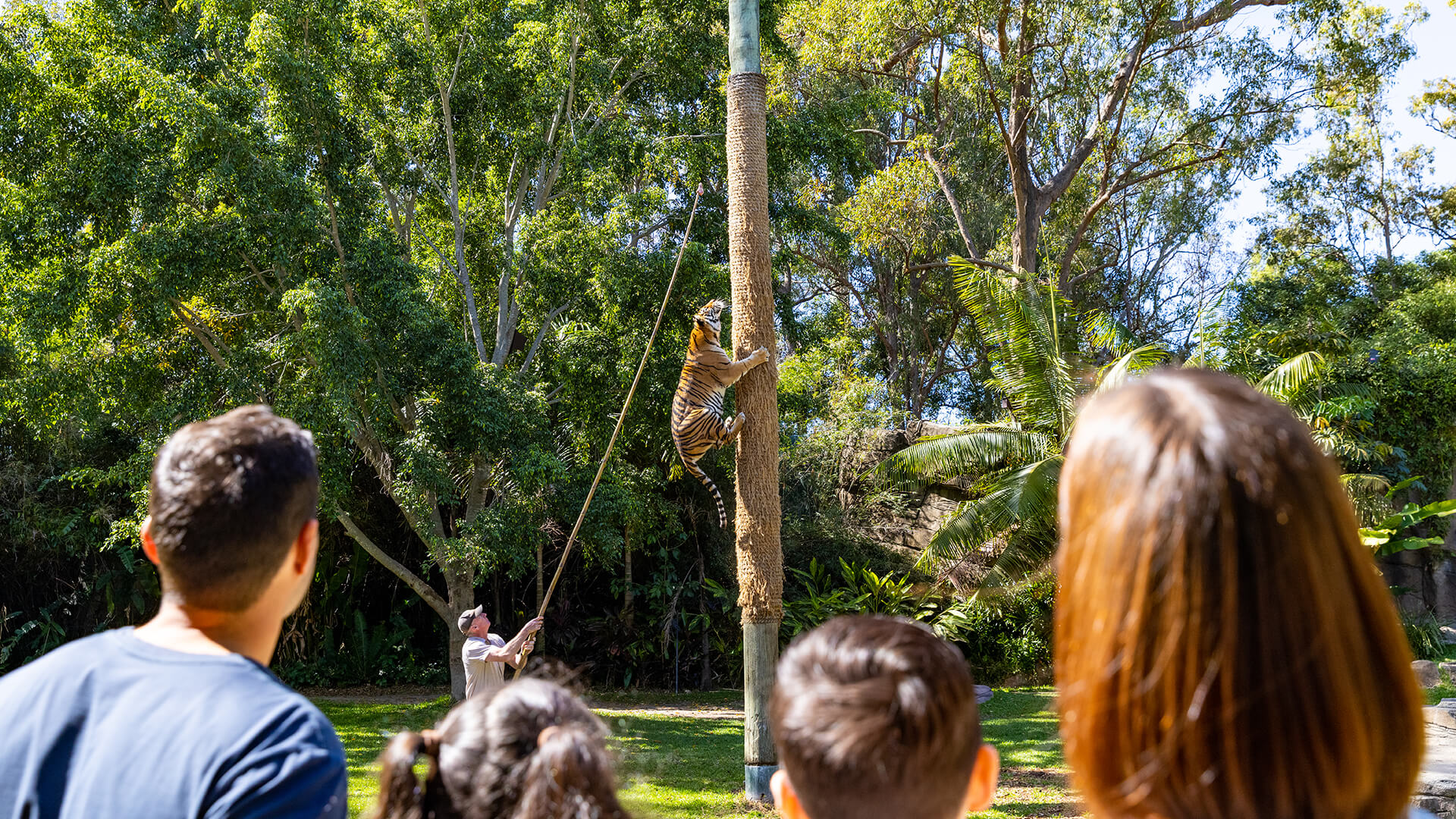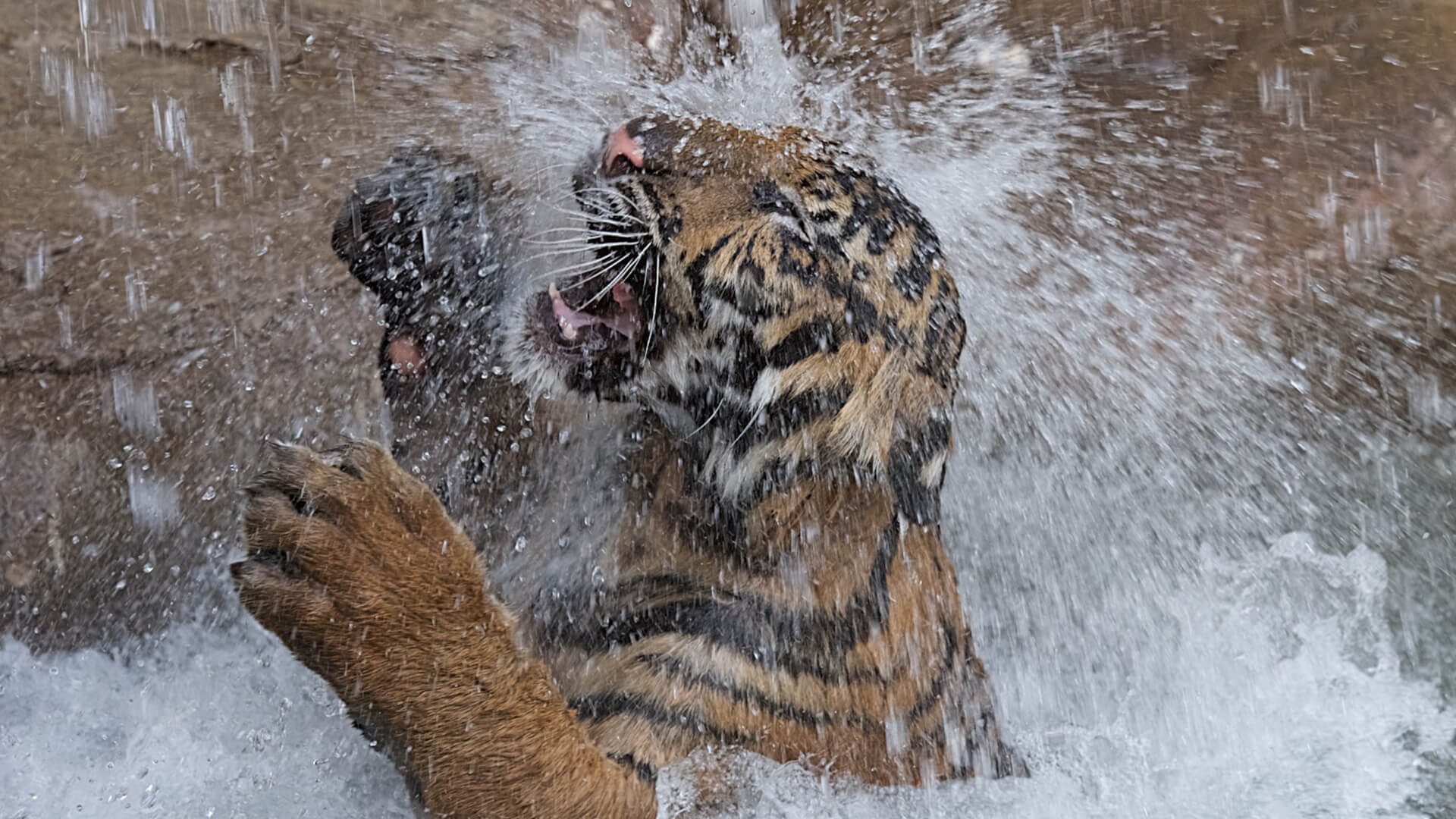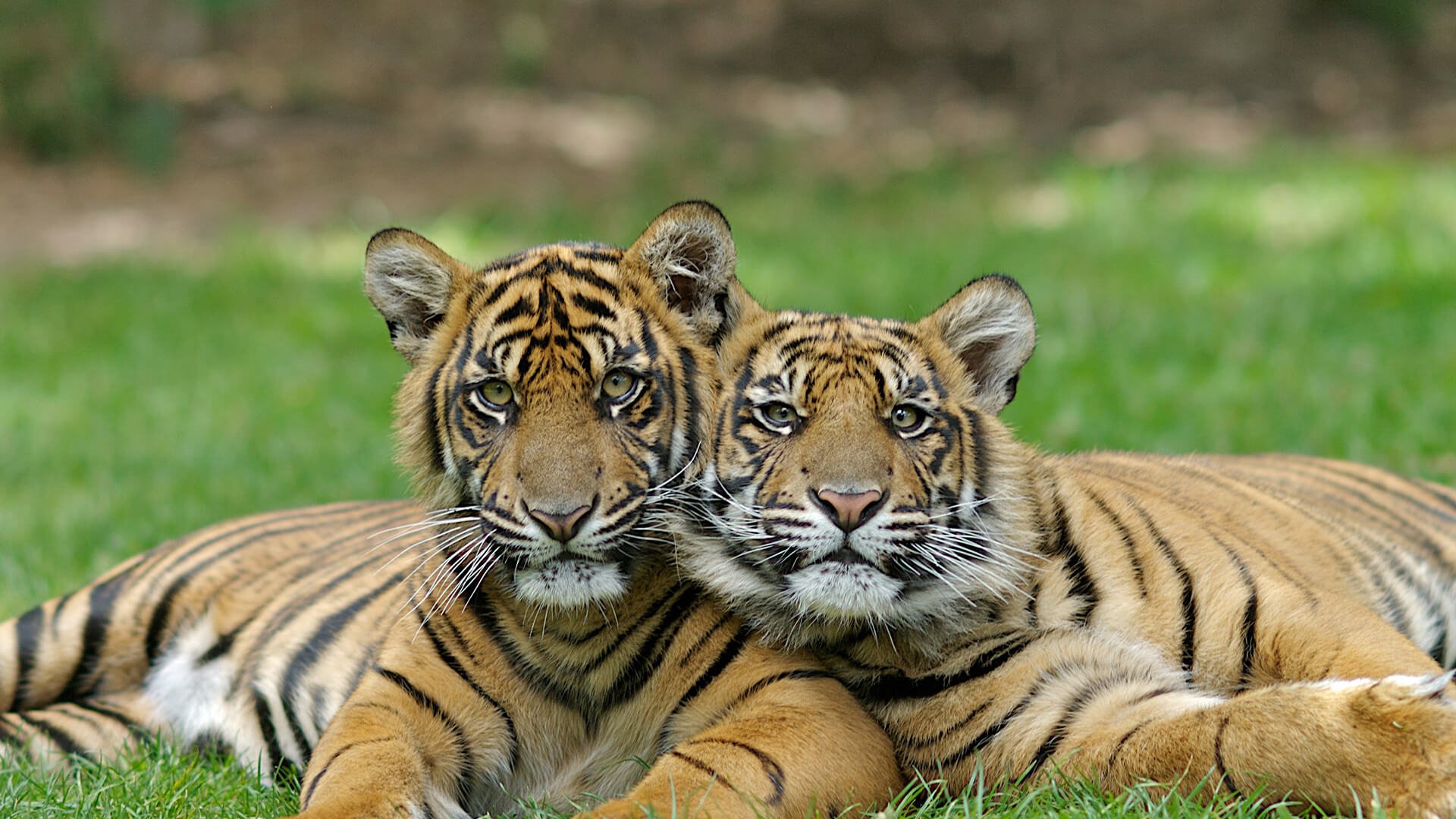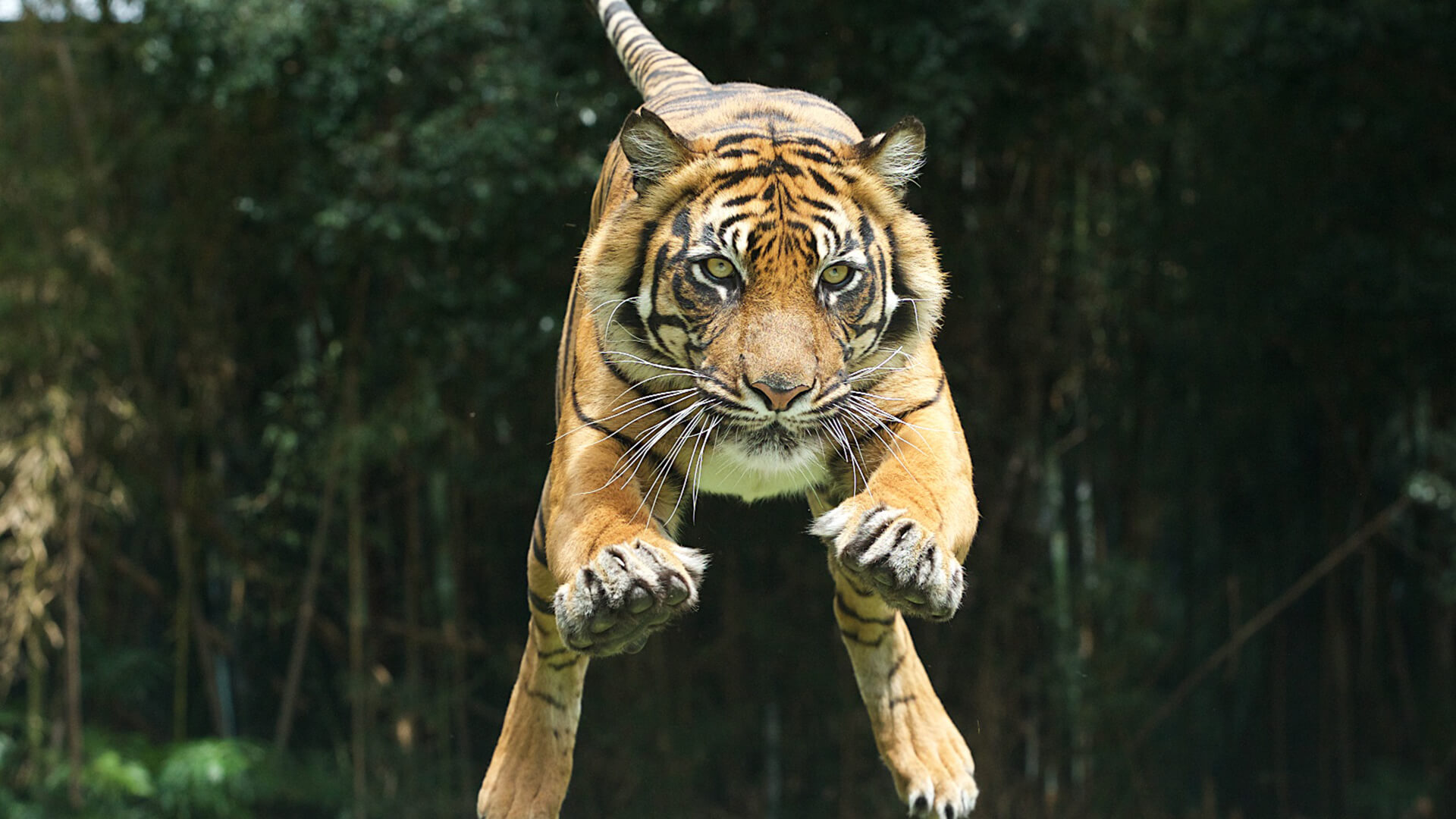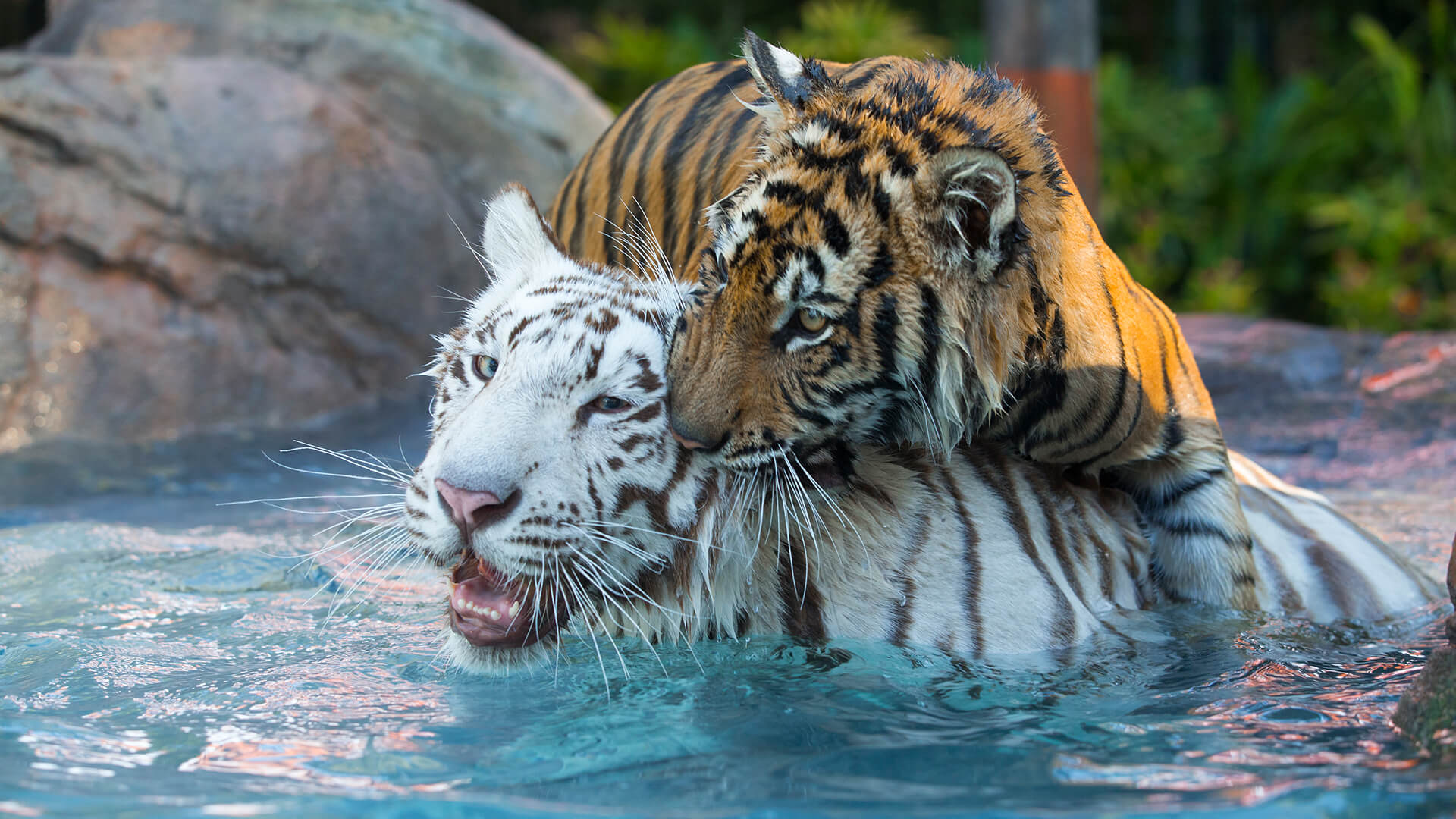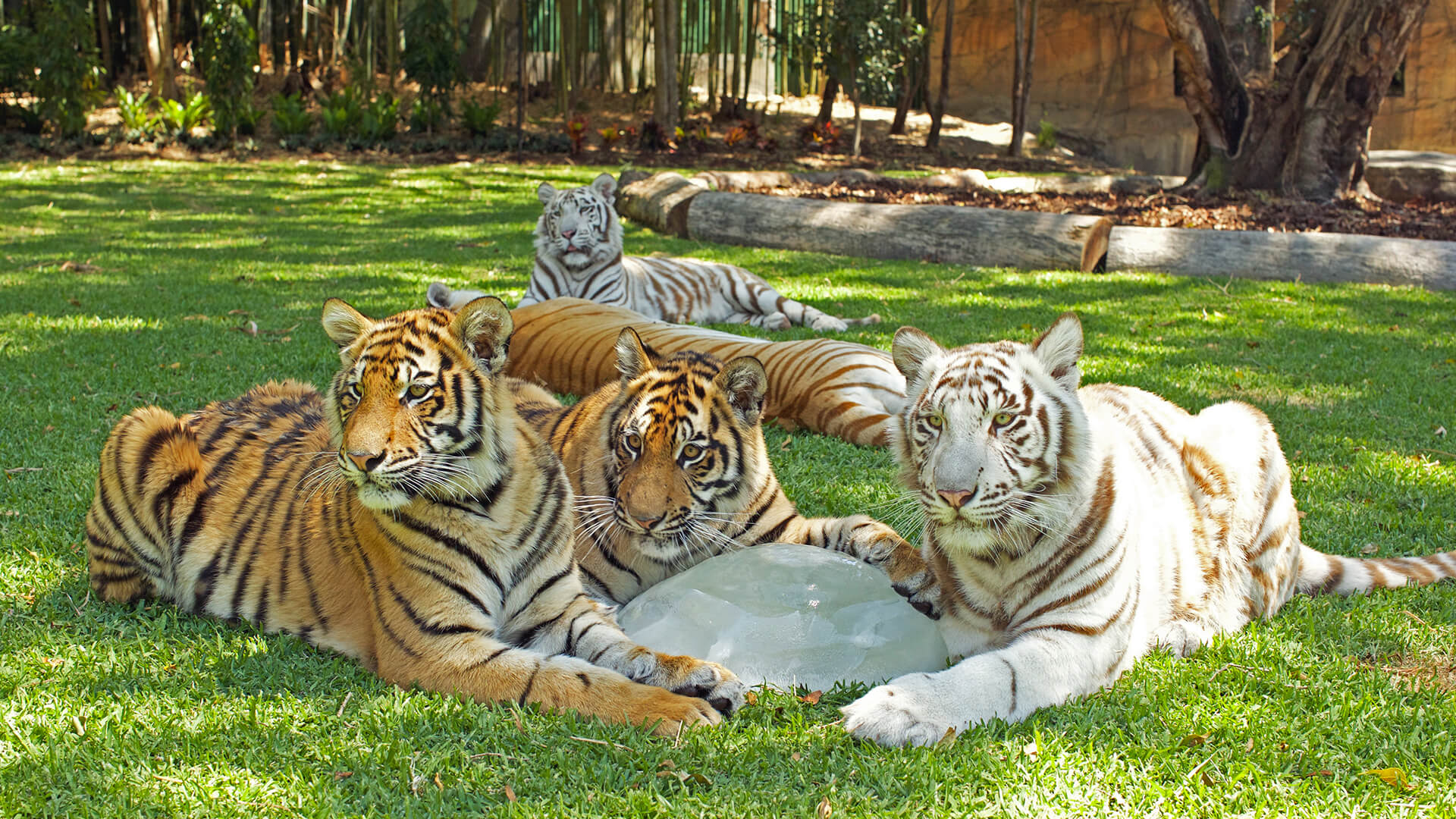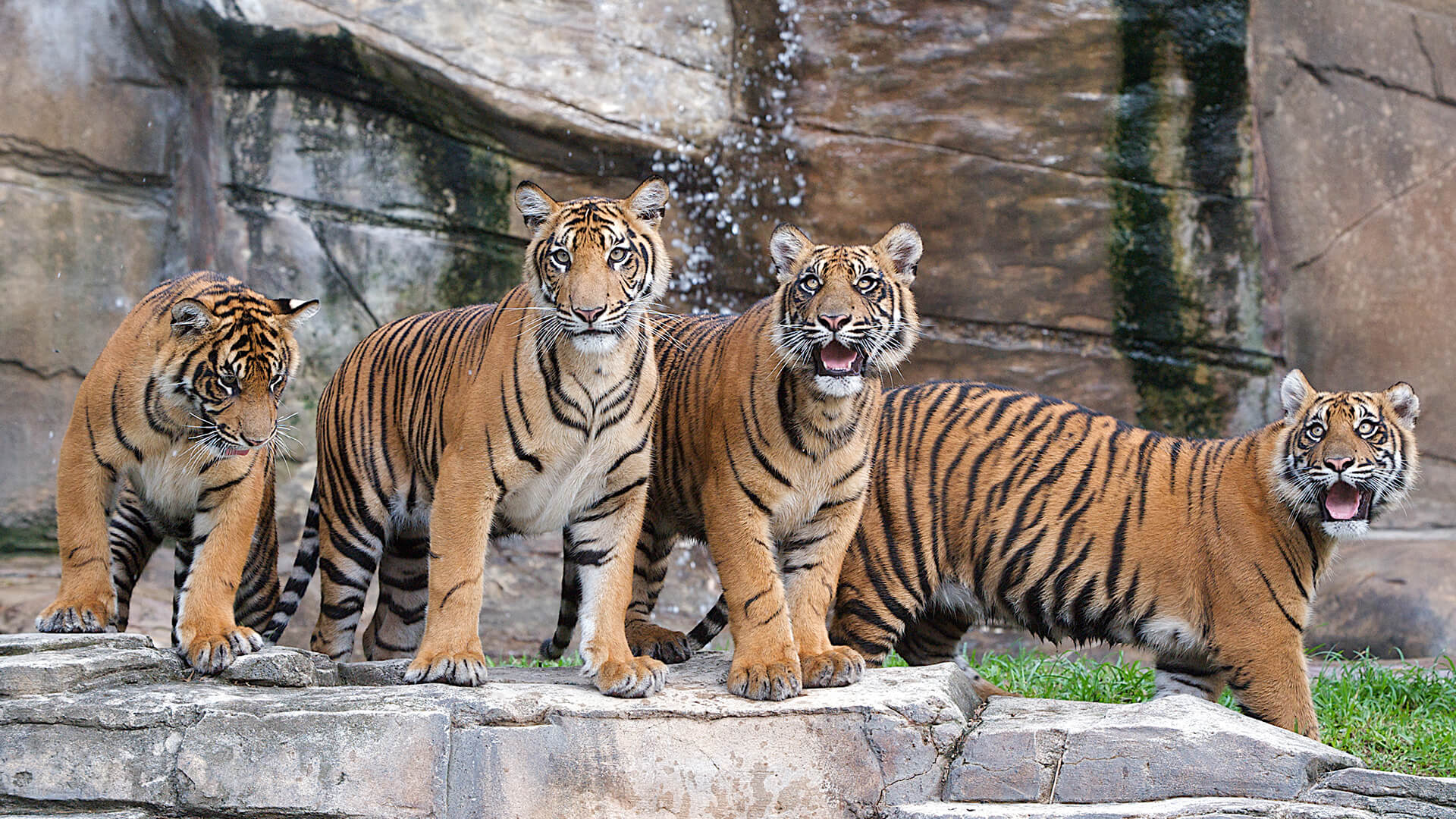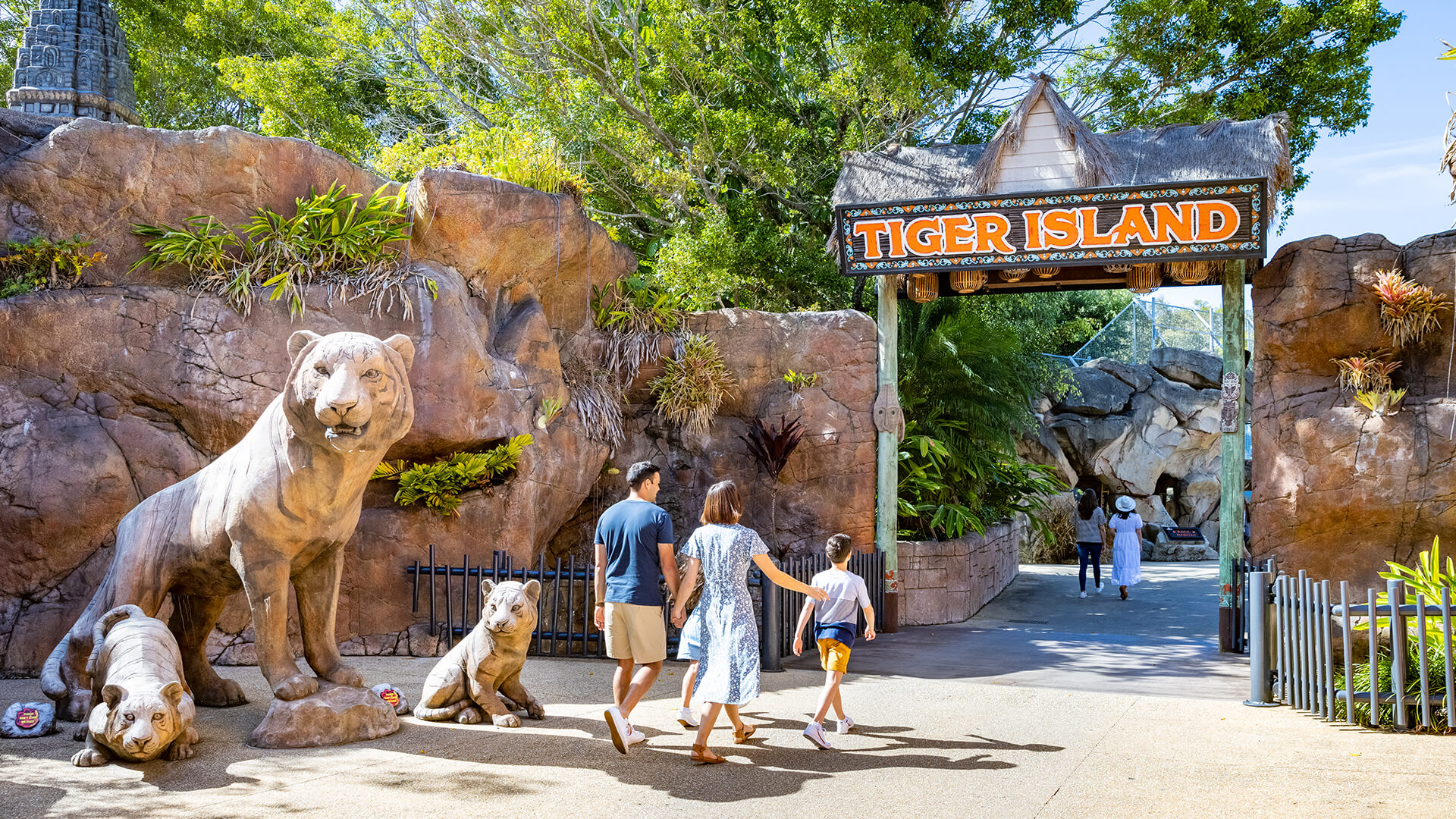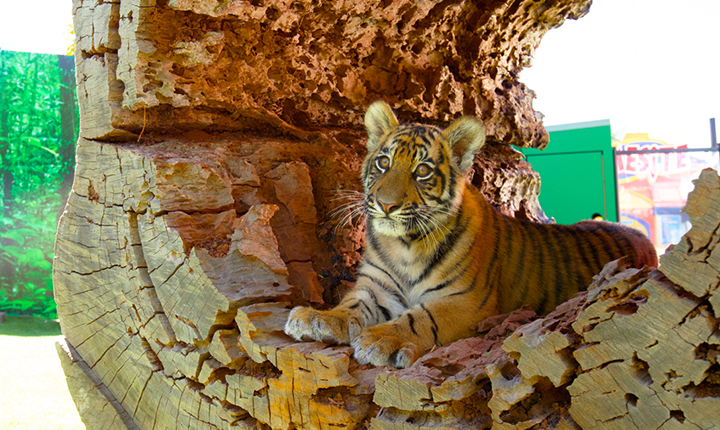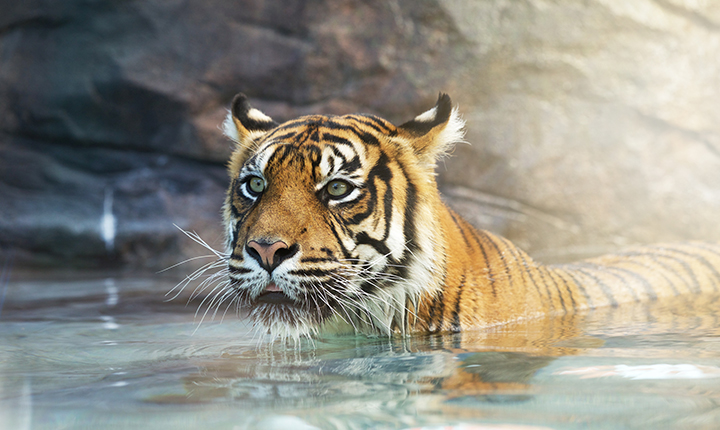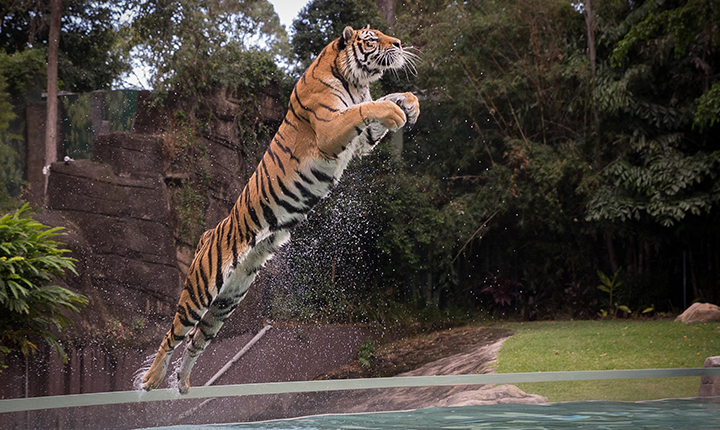The only place on the Gold Coast where you can get up close to Tigers!
As part of our conservation work with DWF, our tigers are ambassadors for their cousins in the wild, as we work towards protecting the species. Be mesmerised by their grace as you watch them glide underwater at the splash pool and feel in awe of their brute strength at feeding time.
Get Up Close
Get mere centimetres from our tigers in our Tiger Island Up Close enclosure. Up Close features viewing tunnels into the enclosure, which children can crawl through, and large viewing areas where you can get so close you could feel the breath of a tiger.
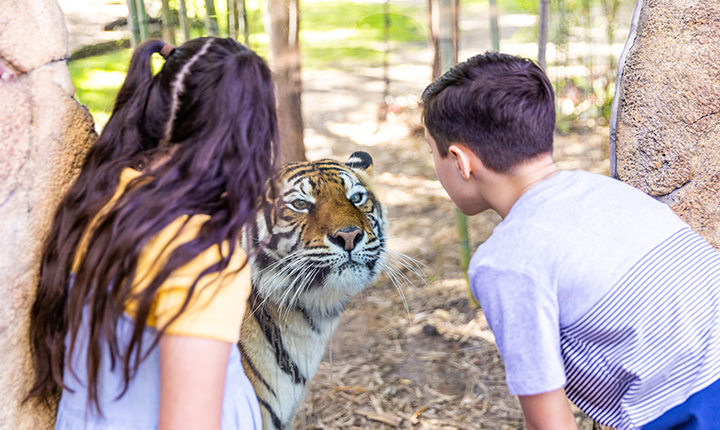
Our Tiger Cub Trio
Come and see the youngest (but not so little) tiger generation at Dreamworld! Zakari and Javi were born on 25 April 2019, and their uncle Khan arrived one month later.
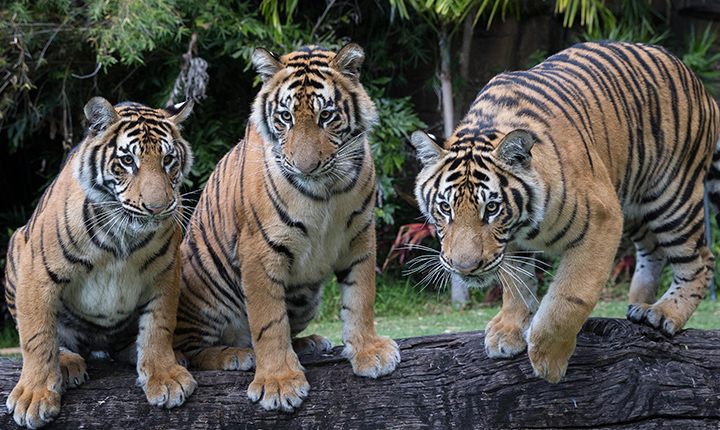
Tiger Feed Experience
The only location in Queensland where guests can tong feed a Tiger! This 15-minute experience will leave you roaring!
This experience is COVID Safe and separate tongs will be supplied for members of different groups participating.
Participants must be over 13 years of age. Children between 13 & 15 years of age must be accompanied by a paying participating Adult.
Book NowMeet our Tigers
Dreamworld's Tiger Island is home to 10 Sumatran and Bengal tigers.
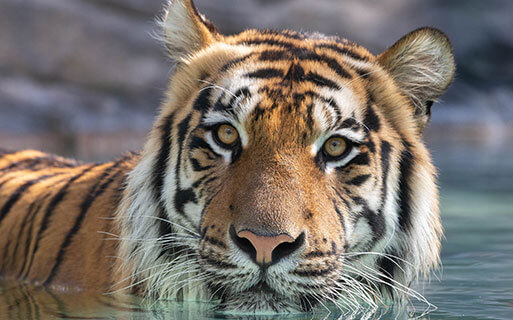
![]() 25 May 2019
25 May 2019 ![]() Male
Male ![]() Golden with dark stripes
Golden with dark stripes
Khan put his imprint on the Tiger Island family as he took the limelight on Saturday 25 May, as the only cub of his litter. His name, meaning a leader who focuses on important issues, reflects his stripes and greater purpose at Dreamworld.
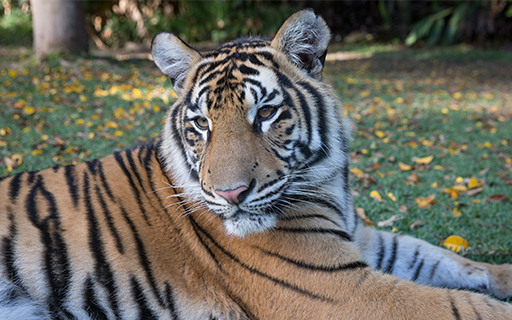
![]() 26 April 2019
26 April 2019 ![]() Male
Male ![]() Golden with dark stripes
Golden with dark stripes
35 minutes older than his brother, Javi greeted the world as the first cub of his litter to first-time parents, Adira and Pi. Alongside his brother Zakari, the paw-fect pair join their Tiger Island family in sharing the important message of global tiger conservation. True to the cub’s stripes Javi, meaning victorious, is from an Indian origin, where tigers roam in the wild.
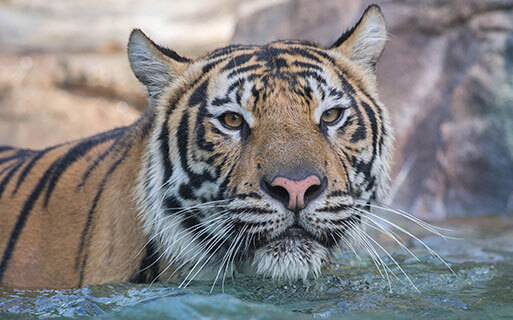
![]() 26 April 2019
26 April 2019 ![]() Male
Male ![]() Golden with dark stripes
Golden with dark stripes
Zakari made his first paw print on the world alongside his brother, Javi, on Friday 26 April. The name is associated with individuals who have a desire to inspire others in a higher cause, which goes hand-in-hand with our global conservation drive. He will walk in the paws of his tiger family with his brother Javi, being the next generation of incredible ambassadors for their endangered cousins in the wild.
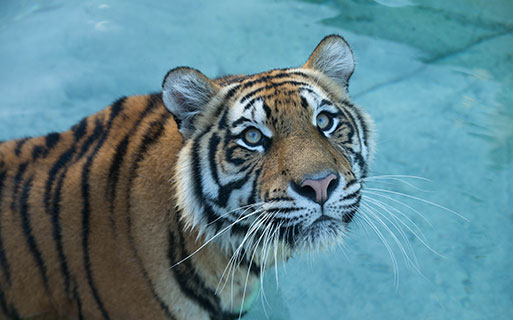
![]() 29 November 2015
29 November 2015 ![]() Female
Female![]() Golden with dark stripes
Golden with dark stripes
Adira and her sister Akasha were born at Tiger Island on the 29th November, 2015 to mother Nika. Adira meaning 'strong and noble' will help raise awareness on the plight of tigers and need for tiger conservation for their cousins in the wild.
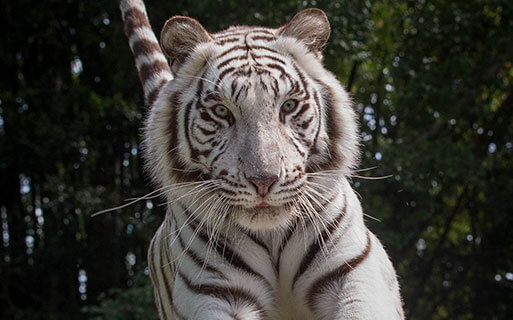
![]() 2 November 2015
2 November 2015 ![]() Female
Female ![]() White with dark stripes
White with dark stripes
Kiko and sister Kali were born at Hirakawa Zoo in Kagoshima City on the 2nd November, 2015 and transferred to Dreamworld on the 16th February, 2016. The tigers will help raise awareness of the plight of their cousins in the wild to help fund projects in the wild through the Dreamworld Wildlife Foundation.
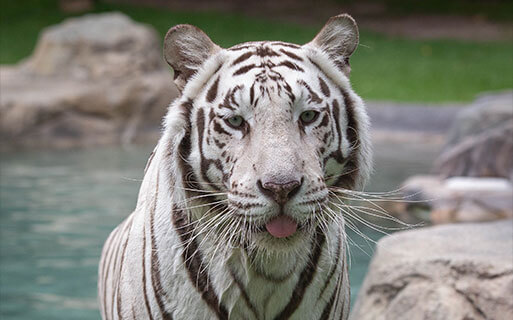
![]() 2 November 2015
2 November 2015 ![]() Female
Female ![]() White with dark stripes
White with dark stripes
Kali, and sister Kiko, were were born at Hirakawa Zoo in Kagoshima City on the 2nd November, 2015 and transferred to Dreamworld on the 16th February, 2016. The tigers will help raise awareness of the plight of their cousins in the wild to help fund projects in the wild through the Dreamworld Wildlife Foundation.
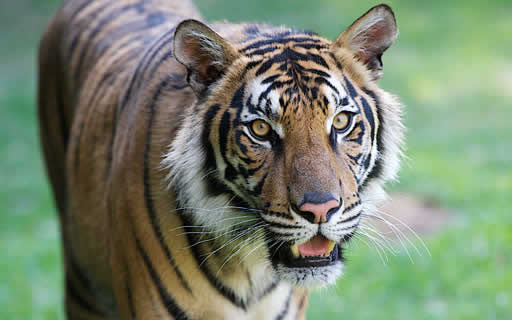
![]() 19 July 2010
19 July 2010 ![]() Male
Male ![]() Golden with dark stripes
Golden with dark stripes
Born at Cairns Wildlife Safari Reserve, Pi, the main character in the book "Life of Pi" was mis-mothered and transferred to Dreamworld to be hand-reared by Dreamworld's experienced tiger handlers. The transfer has given Pi the opportunity to socialise with the other big cats.

![]() 9 June 2008
9 June 2008 ![]() Female
Female ![]() Golden with dark stripes
Golden with dark stripes
Jaya and her two sisters Shanti and Ndari were born at Tiger Island. 'Jaya' meaning 'victory' was chosen for its significance to the survival of the species. Jaya and her sisters are an important part of the Global Species Management Program.
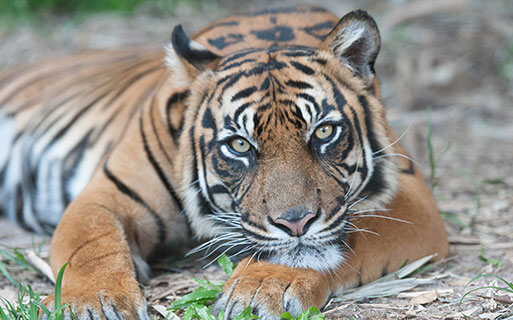
![]() 9 June 2008
9 June 2008 ![]() Female
Female ![]() Golden with dark stripes
Golden with dark stripes
Shanti and her two sisters Jaya and Ndari were born at Tiger Island. 'Shanti' means 'inner peace' in an ancient, classical Indian language. Shanti and her sisters are an important part of the Global Species Management Program.
Daily Tiger Presentations
Watch our tigers jumping, climbing and swimming - all natural activities in the wild that you get to see firsthand, right here on Tiger Island!
Life on Tiger Island
Less than 4,000 remain
There are approximately 4,000 tigers remaining in the wild and their survival is constantly threatened.
Three subspecies extinct
With three subspecies already extinct, the plight of the tiger is a serious problem largely caused by humans in three major ways: hunting, poaching and destruction of the habitat.
At the current rate of poaching and habitat loss, it is estimated that tigers in the wild could completely disappear within the next ten years.
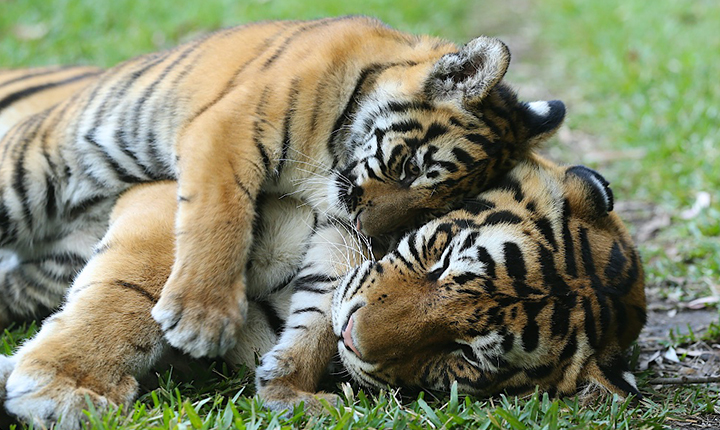
We're their voice
Through the Dreamworld Wildlife Foundation (DWF), we endeavour to be the voice for those that cannot speak. By backing global conservation initiatives and fostering education around endangered species since 2012, we are helping to make a dramatic change. More than $3.5 million dollars has been raised through DWF to help save species such as tigers, koalas, bilbies and tree kangaroos.
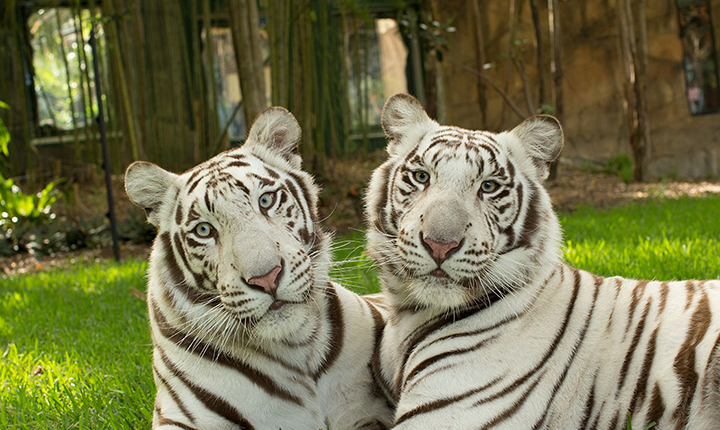
We're driving a change
How can you help?
With the threat of extinction ever-growing, you can help us make a difference today.
Through the Adopt an Animal program you can help your favourite species by adopting them into your family. 100% goes to supporting wildlife projects in the wild.
The Adopt an Animal Program lasts for twelve (12) months.
Support the Dreamworld Wildlife Foundation by making a donation to help protect endangered species. Donations from $5 can be made online.
Afterpay is not available on DWF Donation packages.
Get up close and personal with one of the many animals who call Dreamworld home. A percentage of funds from all wildlife experiences goes to the Dreamworld Wildlife Foundation, supporting the conservation of threatened and endangered species.


